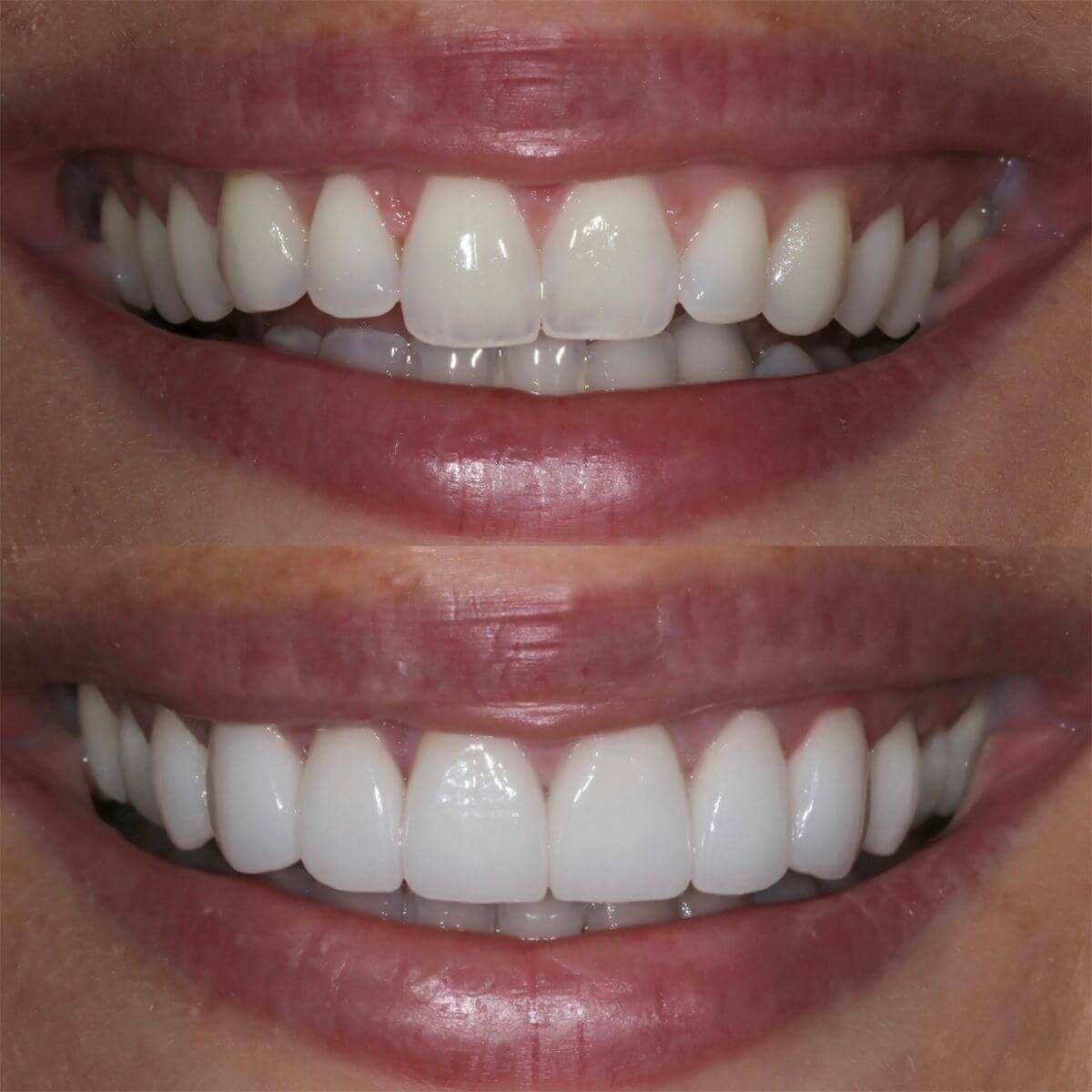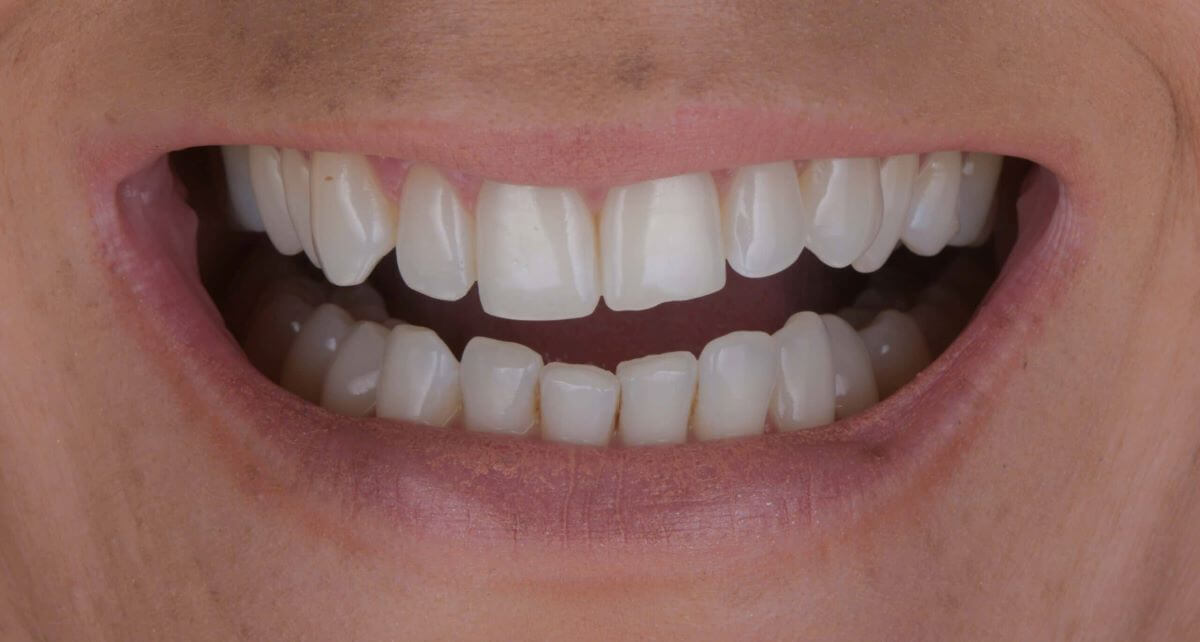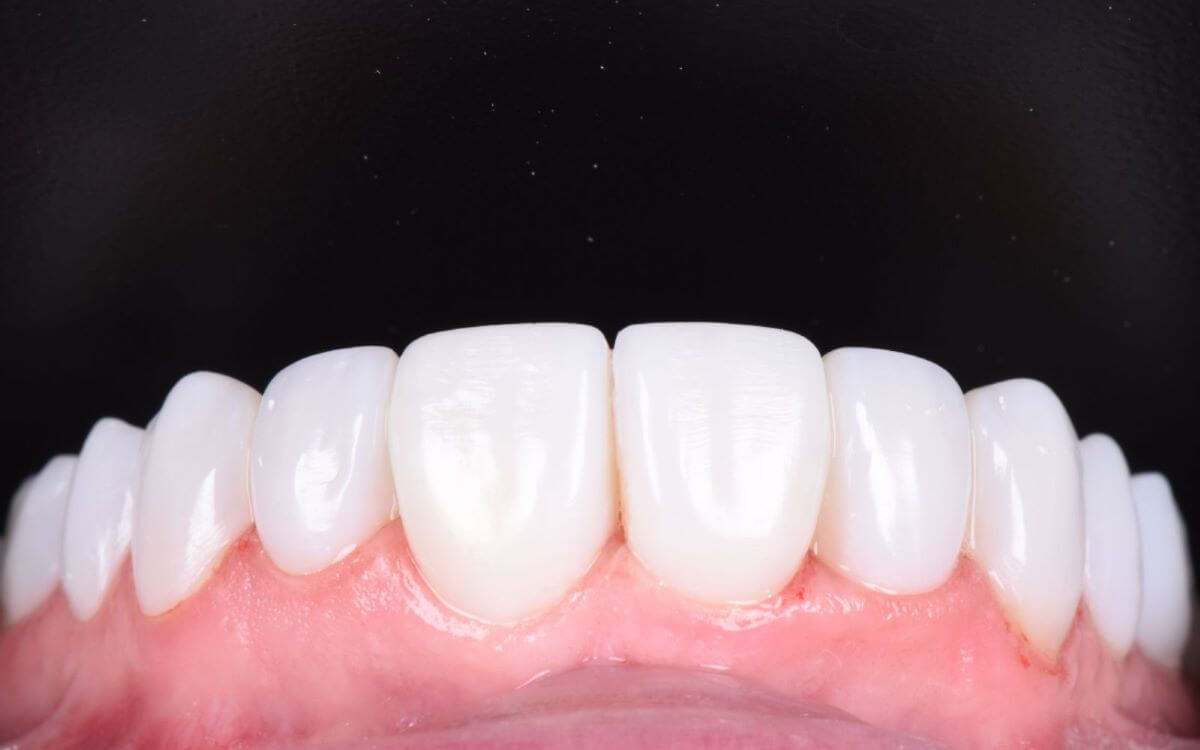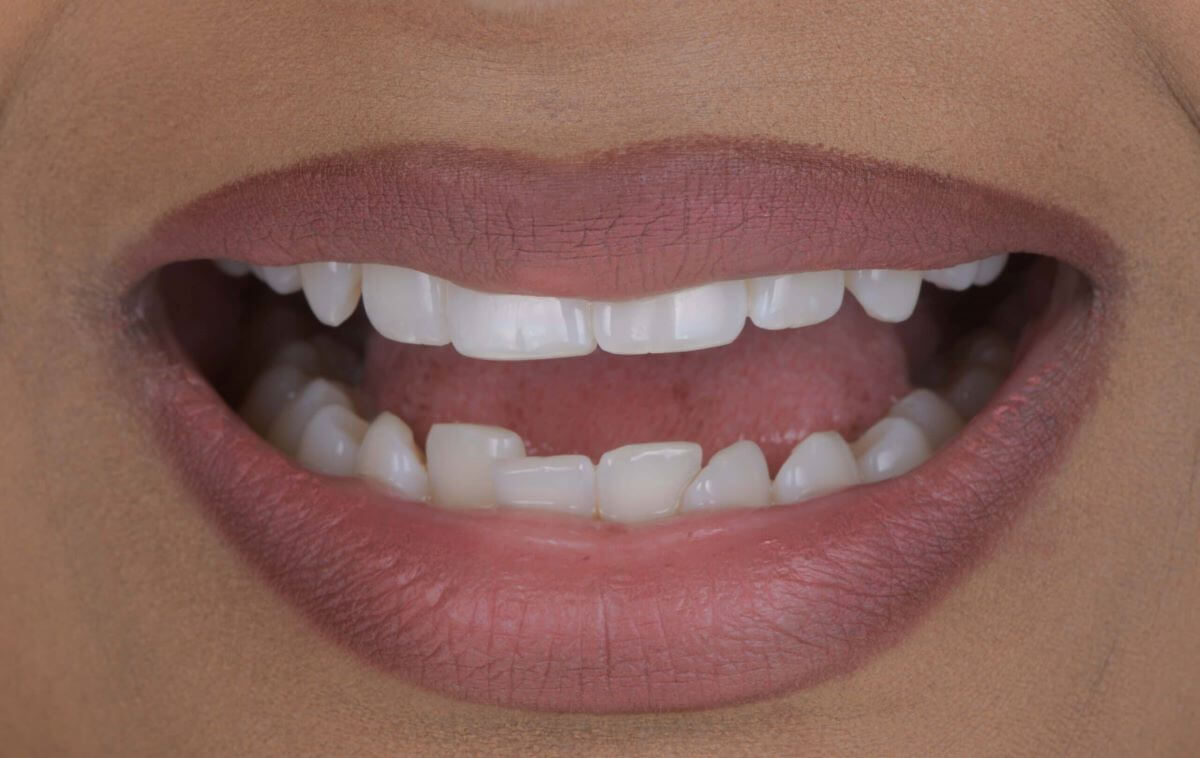Tooth contouring is one of the fastest, most cost-effective, and non-invasive procedures in dentistry. The procedure involves shaving away the enamel to change and improve the shape of the tooth. Cosmetic contouring is a viable option if you are facing dental aesthetic deficiencies such as chips, cracks, stains, slight unevenness, etc. Also known as enamelplasty or remodeling, the proper examination is required before proceeding as there must be sufficient enamel. However, it’s best to get in touch with your dentist first to have your teeth evaluated and whether you qualify as a candidate.
Here are some articles explaining tooth contouring, what it offers, and what you can expect:
1. Before and after dental contouring surgery
Dental contouring or tooth reshaping or the dental term, enamelplasty, is a procedure that changes the shape of teeth to achieve an even and attractive smile. Enamelplasty involves removing enamel from teeth to change their shape, especially the front teeth. Contouring is basically better for people with cracks, overlaps, stains, marks, and other minor blemishes that don’t require invasive procedures.
Now we get into the details of beauty treatments and the things you need to know for a better understanding:
- Dental Evaluation
- tooth marks
- Contouring/Shaping
- Dental Bonding
1) Dental Evaluation
Before we get into the details of the process, it’s important to get in touch with a qualified dentist. Standard practice prior to tooth contouring is to check the condition of the teeth. To do this, the dentist will take several X-rays and examine the teeth thoroughly to make sure they are healthy. They check the amount of enamel present, and whether the tooth can be reshaped. If the enamel is not sufficient, your dentist will most likely recommend veneers. This is why one of the most important requirements for contouring is adequate enamel.

2) Teet markings
After your dental exam, your dentist will mark and label your teeth, which are also precisely shaped. They digitally scan the teeth and make changes to the digital impression. Many dentists also perform this step manually before starting the contouring process. Patient discretion is also an important step at this point so they can express what they want.
According to research, this process can sometimes be very useful for aligning teeth and aligning your bite. During marking, the dentist focuses on problem areas with cosmetic concerns, such as cracks, stains, or marks. They use devices such as orthodontic pens to mark teeth for accurate changes.
3) Contouring/shaping
After the problem areas have been marked on the teeth, the dentist proceeds with the shaping process. Use a grinding tool or drill to scrape away a thin layer of enamel to avoid putting too much pressure on the tooth. For example, if there is a stain on one of the front teeth, the dentist will use a sanding disc to gently abrade the surface to remove the stain.
Many times, a dentist will prescribe the procedure before orthodontic treatment such as braces or aligners. These pre-treatment preparations are necessary in order to achieve the desired results. However, it is possible to opt for this procedure without any orthodontic treatment. If you have minor blemishes that prevent you from smiling with confidence, you can opt for contouring. This procedure works well for even teeth if your teeth don’t match up with the rest of the teeth and have jagged edges. Sometimes people also want smaller teeth, and shaping is a great non-invasive way to achieve this.
4) Dental composites or bonding
The final and most important part of the process is restoring the part of the tooth where the enamel was removed. For example, a patient with a noticeable dark stain on the front teeth will need bonding to restore the tooth to a more natural look.
Tooth bonding is an important part of the contouring process, which is necessary because once a certain amount of enamel is removed, the tooth becomes brittle. Tooth restoration is also important for the health of your teeth and for avoiding any future dental problems. For a more natural look, make sure the bond is the same color as your teeth.
5) How long does the procedure take?
The tooth contouring process is fairly short and simple. Usually no more than 30 minutes, but also depends on how many teeth need to be trimmed. Since it is a non-invasive procedure, no anesthesia or any preparation is required. As a result, there are no complicated procedures involved in the procedure, so it is relatively short and painless.

2. Advantages and disadvantages of tooth contouring
If your teeth are irregularly shaped and uneven, tooth contouring is one of the options you can choose. However, this process still has certain advantages and disadvantages:
1) Benefits of Tooth Contouring
- Short procedure: One of the greatest advantages of contouring is that it is simple and short, lasting no more than 30 minutes.
- COST EFFECTIVE: Contouring is one of the fastest ways to get straight teeth without paying a lot of money.
- Non-invasive: Another great advantage of contouring is that it is completely non-invasive. Dentists use grinding discs or lasers to change the shape and length of teeth.
- Improved Oral Hygiene: If your teeth overlap, there is a higher chance of cavity buildup because it is difficult to clean them properly. With contouring, the enamel that causes overlapping teeth is removed. Not only does it straighten your teeth, but it also improves overall oral hygiene and allows for easy cleaning.
- Better-looking smile: Since the procedure is designed to change the shape of your teeth, it can enhance your smile. It improves the contour of the teeth, making them appear more aligned and straighter. It’s an easy way to treat minor tooth defects like cracks and stains.
2) Disadvantages of tooth contour
- Sensitivity risk: Since a major part of the trim is removing enamel from parts of the tooth, there is always a risk of oral sensitivity. Enamel protects our teeth from damage and infection. Therefore, it is important to choose a dentist who specializes in orthodontic treatment. Sensitivity also increases the risk of tooth decay and gum disease.
- For Minor Variations Only: Contouring is only suitable for people with minor dental imperfections, such as minor cracks, stains, and overlapping teeth. More complex issues such as overlays and inversions and overcrowding cannot be treated with contouring.
- Not long-lasting: While contouring is non-invasive and cost-effective if oral health is neglected, it won’t last long.
3) Who is tooth contouring suitable for?
While body contouring is a quick and non-invasive procedure, it’s not for everyone. A dental examination or examination is required to find out about the patient. Contouring is more suitable for minor and mostly aesthetic issues such as minor stains, minimal overlap, cracks, and slightly uneven teeth. Contouring is not an effective procedure for complex problems such as severe overcrowding, receding gums, receding bones, loose teeth, etc. A qualified cosmetic dentist is essential as their expertise is critical in identifying the right candidate for tooth reshaping.
4) How much is the tooth contour?
Since contouring involves removing enamel, it requires expertise since it is not a terribly complicated procedure. If you have made up your mind to undergo contouring, it is imperative that you choose a qualified orthodontist or cosmetic dentist. The cost of tooth contouring varies by patient, but according to Cosmetic Dentistry of America, the average is between $50 and $500 per tooth. When comparing the price of contouring with other dental treatments, it is much lower and one of the most affordable procedures.
5) Possible side effects of tooth contouring:
Although body contouring is a non-invasive and painless procedure, there are some side effects. As you now know, contouring involves removing enamel to fix cosmetic imperfections, and irritation is a possible side effect. Oral sensitivity can occur if your dentist removes too much enamel. Over-removal of enamel can also cause problems in the long run, such as making teeth more prone to decay and tartar formation. Excessive removal of enamel can also cause gum irritation. In extreme cases, there is also the possibility of loose teeth and brittle teeth due to plastic surgery.
These are the inquiries we receive from our patients regarding tooth contouring. If you are currently considering reshaping your teeth, you should know as much as possible.
Is Orthodontics bad?
Aligning teeth instantly with tooth contouring is an instant procedure, but there are conflicting opinions about it. The procedure itself isn’t that drastic, but it involves removing a thin layer of enamel to fill the tooth to the desired shape.
Enamel is the protective layer on teeth that protects them from potential damage, so teeth tend to become weak when they are filled. If the enamel becomes too thin during the procedure, the teeth can develop sensitivity problems. There is also an increased risk of tooth decay because, without enough enamel to protect the tooth, the tooth becomes weak. Dentists often give instructions on how to care for the contours of your teeth after surgery. They include brushing with less abrasive toothpaste and using a toothbrush to avoid friction and strenuous exercise. Inflamed teeth and gums are the last things you want after a shaping session. Therefore, if someone is currently considering tooth contouring, it is wise to keep these factors in mind.

6) How long does the contour last?
There are no hard and fast rules for how long someone’s silhouette lasts. It depends on a variety of factors, but one of the most important is your dental hygiene. If your oral hygiene regime is consistent and thorough, you can prolong the effects of treatment. Follow basic dental hygiene practices, such as regular brushing, flossing, and mouthwash. In addition to these habits, be sure to see your dentist every few weeks and have your teeth checked every month. Believe it or not, these simple habits can have a huge impact on improving your oral health.
7) Will orthodontics be painful?
In dentistry, tooth reshaping, filing, or contouring is one of the least invasive procedures. Dentists perform the procedure daily without anesthesia, so it is fairly painless. You may experience mild discomfort, but it is mostly painless. Plus, it doesn’t take long to perform, so it can enhance your smile in minutes.
8) How to have healthy teeth after plastic surgery
Tooth contouring is a non-invasive dental technique used to repair minor dental problems. These problems include cracks, fangs, stains, and slightly overlapping teeth. If you don’t take care of your teeth for a long time, this dental treatment will only have a temporary effect.
The way you maintain your oral health is critical to getting the most out of your remodeling results. Basic oral hygiene, including regular brushing after meals, rinsing, and flossing is essential to maintaining dental hygiene after treatment. It will certainly help prolong any treatment, including shaping. Beyond the basic regime, regular visits to the dentist play an important role in maintaining dental health. Deep cleaning and polishing improve the appearance and promote dental health. Also, our dentists recommend using a soft-bristle toothbrush and non-abrasive toothpaste to avoid damaging your teeth from brushing and abrasive chemicals.
9) Success rate of orthodontics
According to research, filing or reshaping teeth and building them out of composite materials is an excellent alternative to veneers and lab-made crowns. The study also showed a 5-year functional survival rate of 84.6%. No reports were completely missing, and clinical quality was rated as excellent or good. This study justifies the acceptance of contouring or reshaping as a successful aesthetic corrective treatment.
Another study showed that contouring can successfully soften the incisional margins that lead to smile imperfections. Experiments have shown that contouring makes smiles look softer. It also concluded that cosmetic reshaping of teeth is an effective alternative to veneers and crowns. So if you want a non-invasive and affordable way to reshape your teeth, it’s worth looking into.
10) Teeth contour before and after braces
Reshaping or filing are some other terms used for tooth contouring. For minor changes before and after braces, orthodontics often contour or shave. Your dentist will make small changes to your teeth before and after you get braces. The file teeth get the best results from orthodontic treatment.
There is no anesthesia during the procedure, and the dentist follows standard procedures. Sometimes dentists also file the teeth before placing braces or Invisalign to make room for the teeth to move. This is a little uncomfortable for the patient, but after a while, this subsides and the braces can be worn.

11) Does whitening also include whitening?
When there is a great deal of discoloration on the teeth, the dentist might include it in the contouring process. Straightening and cleaning the teeth is the main goal. If your teeth are stained, whitening or cleaning is a great way to remove the stain. The appearance of your teeth will be further improved if your dentist also recommends whitening after contouring. There are many treatments for the aesthetic appearance of teeth, including filing, bonding, and cleaning/whitening. Many times, dentists will also send patients home whitening kits, but this is only a temporary fix.
3. Conclusion
Tooth contouring is one of the quickest ways to improve and straighten your teeth in no time. It’s also one of the more affordable procedures in dentistry today. It is, however, important to choose a dentist who specializes in cosmetic dentistry. We say this because contouring is a complex process that requires attention to detail. That being said, dentists also agree that the procedure isn’t for everyone — it’s more for those looking for fine-tuning. For example, if you have slightly cracked, overlapping, or pointy canines, profile them in such a way that they appear aligned and straight.





Leave A Comment